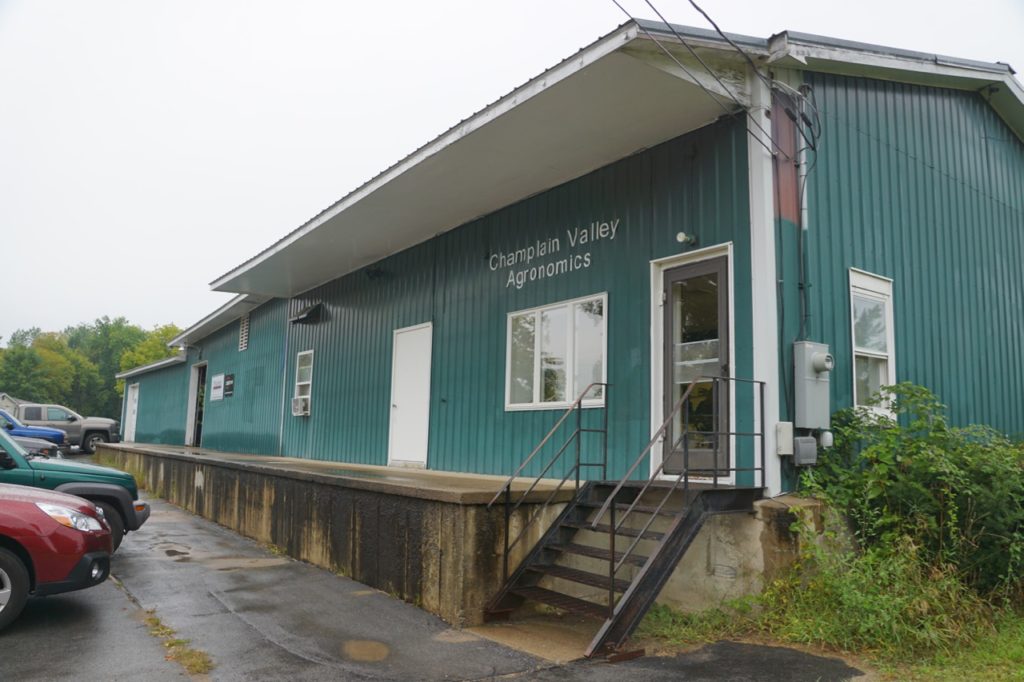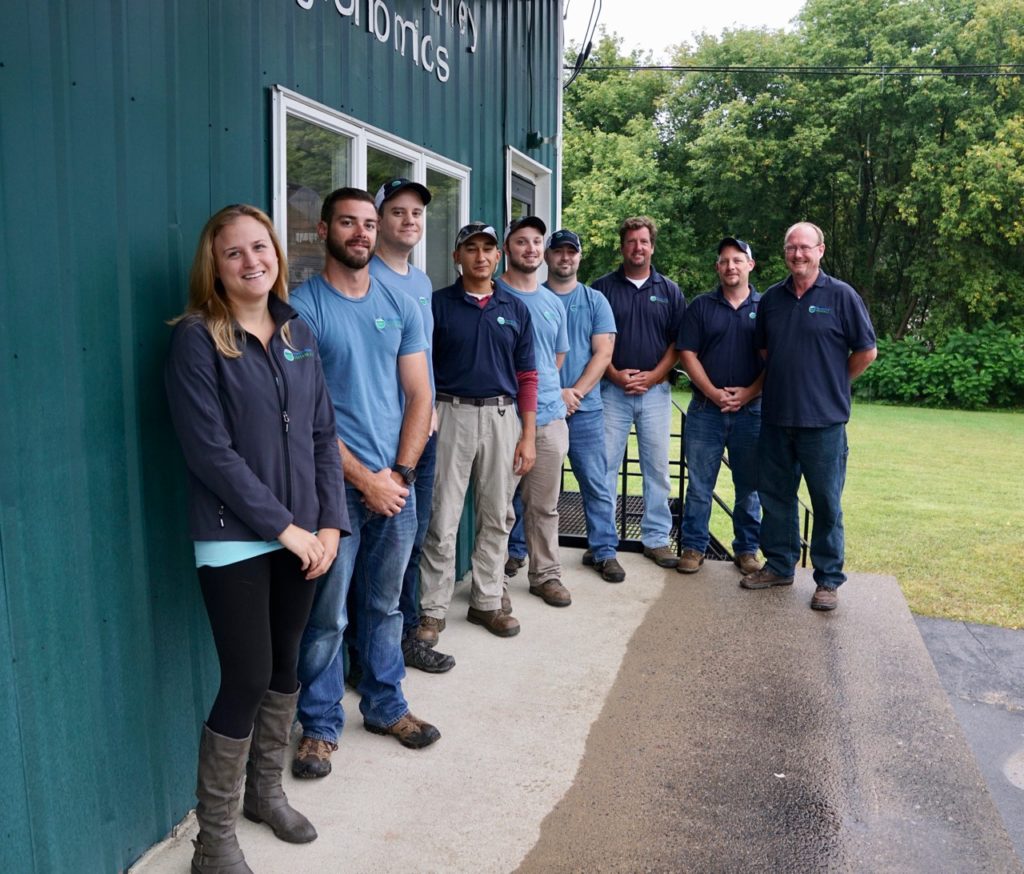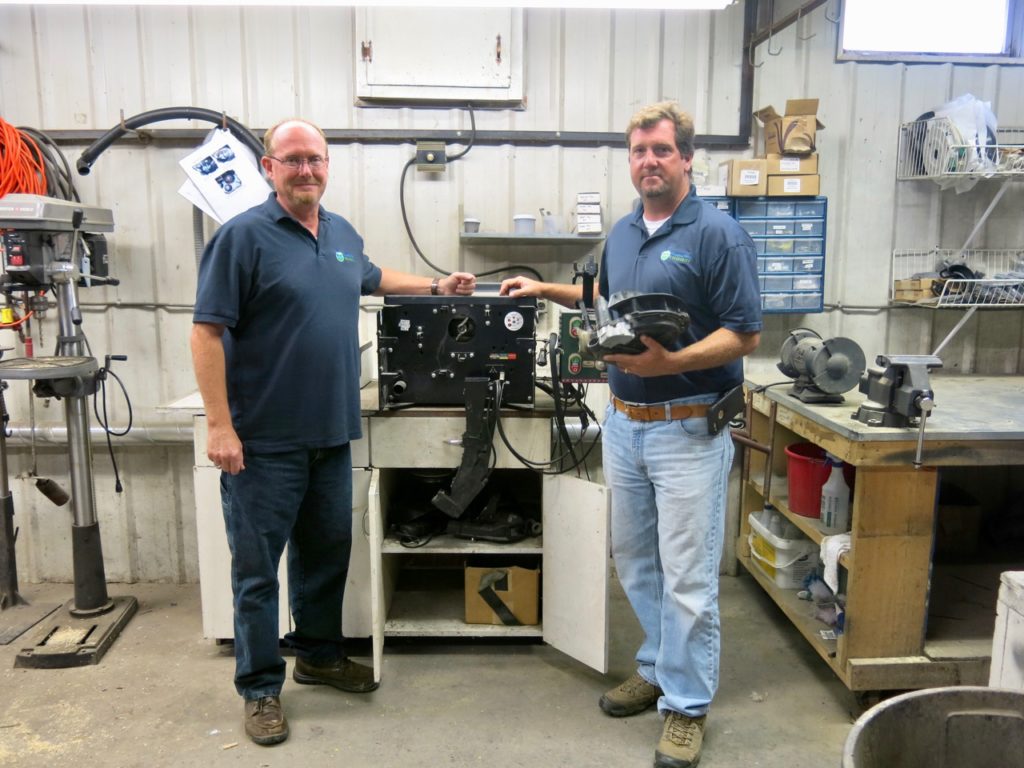A Growing & Successful Peru Business
L-R Jenna LaFountain, Michael Abair, Tim Sengenberger, Jonathon Kraus, Zachary Fleury, Kevin Compeau, Mike Contessa, Shawn Wallace, Eric Bever
By John T. Ryan
The staff at Champlain Valley Agronomics (CVA) is #16 in our Peru Gazette series featuring people who make Peru a wonderful place to live. They differ from almost all the other people we’ve featured because if you’re not in the business of agriculture you may not know about their presence in our community. For this reason, this is a more in-depth story than usual.
Former Agway employees Eric Bever and Mike Contessa co-own Champlain Valley Agronomics. When they left Agway in 1999 to form an agricultural consulting firm, it’s doubtful that they ever imagined returning to a building at 10 Train Road that once housed the Peru GLF/Agway. A building that once was filled with feed bags and later refrigeration equipment now houses offices, computers and high-tech machines.
From 1999 to 2008 they worked out of Eric Bever’s Peru home. In 2008, after having hired two employees, they rented their current building from J. Hogan Refrigeration and purchased it in 2009. Today Bever and Contessa have seven employees and are about to add three more. CVA’s service area includes Albany County north to Clinton County and west to include St. Lawrence County.
At a point in history when farmers profits are being squeezed by low milk prices and environmental regulations are increasing, Champlain Valley Agronomics’ services are in high demand. Eric Bever explained, “We’re a two-fold service provider. We have a crop production side and an environmental side. Right now we are helping farmers decide when to chop corn. During the growing season we look for bugs and insects and manage how farmers combat them. We also provide farmers with nutrient management systems. We determine a crop’s nutrient requirements and determine the amount of manure and commercial fertilizer to be applied. We work to mitigate risk and we’re constantly making modifications.”
CVA technicians transport four-wheelers to farms where they transit fields to take crop, soil and manure samples or examine field grades to determine nutrient runoff potential. They also use GPS equipped drones to locate the precise location of wet areas, potential drainage issues and crop productivity.
At the Peru headquarters technicians use the field data to determine the type and amount of fertilizer or insecticides that should be applied. If their analysis detects poor productivity of a given crop over an extended period of time, the farmer might be advised to improve drainage or to switch to another crop. The goal is to achieve maximum crop production with minimum inputs.
CVA also sells equipment dedicated to precision seed planting and seed control. When integrated with CVA’s aerial mapping and soil analysis, the equipment ensures that planters properly spaces seeds and plant at the proper depth. Mike Contessa said, “I’m on high alert during planting season. I can look at my iPad and see how the seed is being planted on every field, the furrow depth and how many gallons of fertilizer are being applied. If it’s not being done correctly, I immediately communicate with the planter operator.”
Farms with 200 head or more of cattle must comply with a wide range of environmental regulations. Mike Contessa explained, “We work with all the state regulatory agencies to ensure that farms stay in compliance or to get into compliance. Farms must have certain permits. We take care of their permit filing and documentation. USDA also provides grants to help farmers comply with these regulations. The grants are competitive, so we work with farmers to get them ranked as high as possible. Our goal is to have no pollution happening on a dairy farm and to utilize all the manure nutrients for crop production.”
Posted: September 15th, 2017 under Adirondack Region News, Agricultural News, Business News, Education News, Environmental News, Faces of Peru, General News, Northern NY News, Peru News, Peru resident news/accomplishments, Peru/Regional History.


